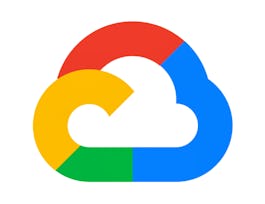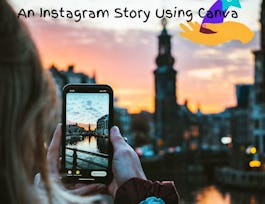Affordable, abundant and reliable energy is fundamental to human well-being and prosperity. For the past 150 years, more and more people have gained access to energy, primarily in the form of fossil fuels – coal, petroleum and natural gas. But now, even while half of humanity cannot access adequate energy supplies, we are beginning a profound transition to more diverse energy sources. Climate change, environmental sustainability, and energy poverty are all important – and sometimes conflicting – drivers as we strive to supply more energy to more people with fewer negative impacts on Earth’s environments.



21st Century Energy Transition: how do we make it work?

Instructor: Brad Hayes
6,256 already enrolled
Included with 
(83 reviews)
Recommended experience
What you'll learn
Understand the complexity of systems supplying energy to people around the world
Evaluate the merits and the costs associated with each major available energy source
Explore competing viewpoints of how quickly, practically and effectively global societies can transition to alternative energy sources
Details to know

Add to your LinkedIn profile
8 assignments
See how employees at top companies are mastering in-demand skills


Earn a career certificate
Add this credential to your LinkedIn profile, resume, or CV
Share it on social media and in your performance review

There are 6 modules in this course
Welcome to 21st Century Energy Transitions- how do we make it work? In this first module, we will introduce one of the great global challenges of our time: how do we deliver dependable global energy in a way that mitigates the effects of human-induced climate change, encourages sustainability, and meets the sometimes competing economic needs of many different countries? To begin answering this question, we will also dive into the past to discover how energy has transitioned throughout human history, and see how this might help us with energy transitions today.
What's included
2 videos1 reading1 assignment1 discussion prompt
To understand the challenges and opportunities of global energy transition, we need to be aware of the different energy sources that are used today, and those that could be more dominant in the future. From fossil fuels and established renewables like solar and wind, to more recent advances in energy sources like biomass and geothermal, in this module we'll introduce each major player in the world of energy, discuss their benefits, challenges, and see some new technology that might provide solutions to future energy issues.
What's included
13 videos1 reading3 assignments2 discussion prompts
Now that we've covered the major energy sources, it's time to switch focus to another important part of the energy transition- energy storage. In this module we'll look at energy storage requirements and priorities, particularly in relation to electricity. We'll also examine hydrogen as a potential source of low GHG energy, discuss its positive and negative attributes, and explore some new technologies making hydrogen more available and competitive.
What's included
3 videos1 reading1 assignment
Congratulations! You've made it to the second half of the course! Now that we're comfortable with energy sources and storage technologies, it's time to ask some of the tough questions for the energy transition over the next century. How do we balance rising energy demands and increasing populations with reducing GHG emissions? How do we improve energy efficiency both as populations and individuals? What are some ways that we can keep GHG emissions as low as possible in future scenarios where fossils fuels will still be required? How do we balance rapid change with continuous energy delivery? How do we reconcile the competing energy policies of different countries? As you'll see in this module, there are very few clear answers, but the 21st century energy transition starts with asking the right questions.
What's included
4 videos1 reading1 assignment1 discussion prompt
In this module, we will explore the two most common viewpoints on the rate of energy transition: Reality 1 and Reality 2. In Reality 1, energy transition will be a measured, gradual process focused on reducing GHG emissions, driven primarily by market forces with diverse energy portfolios. In Reality 2, transition is a more urgent process because the world is facing a climate crisis. Focus is on reducing GHG emissions, with major energy reforms, including the elimination of fossil fuels now or in the near future. We will examine both points of view, discussing their requirements, challenges and implications.
What's included
3 videos1 reading1 assignment1 discussion prompt
Well done on reaching the final module of the course! In this module, we will switch the focus of our discussion from the energy sectors, to the governments and policy makers enacting legislation and guidelines to steer the energy transition. We'll have a look at some current policies, and ask whether stepping stones have been put in place to achieve realistic targets. We will also discuss the many things that we can do better in terms of communication, flexible and logical thinking, and recognizing viewpoints of various stakeholders. Finally, we'll reflect on what we've learned throughout the course and hopefully, find ourselves better equipped to answer our titular question: how do we make the 21st century energy transition work?
What's included
3 videos1 reading1 assignment1 discussion prompt
Instructor

Offered by
Recommended if you're interested in Environmental Science and Sustainability

University of Colorado Boulder

Google Cloud

Coursera Project Network

Coursera Project Network
Why people choose Coursera for their career




Learner reviews
Showing 3 of 83
83 reviews
- 5 stars
88.09%
- 4 stars
10.71%
- 3 stars
1.19%
- 2 stars
0%
- 1 star
0%

Open new doors with Coursera Plus
Unlimited access to 7,000+ world-class courses, hands-on projects, and job-ready certificate programs - all included in your subscription
Advance your career with an online degree
Earn a degree from world-class universities - 100% online
Join over 3,400 global companies that choose Coursera for Business
Upskill your employees to excel in the digital economy
Frequently asked questions
Access to lectures and assignments depends on your type of enrollment. If you take a course in audit mode, you will be able to see most course materials for free. To access graded assignments and to earn a Certificate, you will need to purchase the Certificate experience, during or after your audit. If you don't see the audit option:
The course may not offer an audit option. You can try a Free Trial instead, or apply for Financial Aid.
The course may offer 'Full Course, No Certificate' instead. This option lets you see all course materials, submit required assessments, and get a final grade. This also means that you will not be able to purchase a Certificate experience.
When you purchase a Certificate you get access to all course materials, including graded assignments. Upon completing the course, your electronic Certificate will be added to your Accomplishments page - from there, you can print your Certificate or add it to your LinkedIn profile. If you only want to read and view the course content, you can audit the course for free.
You will be eligible for a full refund until two weeks after your payment date, or (for courses that have just launched) until two weeks after the first session of the course begins, whichever is later. You cannot receive a refund once you’ve earned a Course Certificate, even if you complete the course within the two-week refund period. See our full refund policy.

